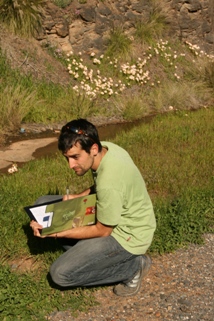Analysing how species niches shift between native and introduced ranges is a powerful tool for understanding the determinants of species distributions and for anticipating range expansions by invasive species. Most studies only consider the climatic niche, by correlating widely available presence-only data with regional climate. However, habitat characteristics and disturbance also shape species niches, thereby potentially confounding shifts attributed only to differences in climate. Presence and abundance data for Oxalis pes-caprae were used, a species native to South Africa and invading areas globally, to understand how niche shifts may be influenced by disturbance at habitat and landscape scales in addition to climate. Available presence-only data and data of extensive surveys of the abundance of Oxalis (c. 11,000 plots) across different habitats in South Africa and in the introduced range in the Mediterranean Basin were used. A large climatic niche expansion towards stronger seasonality and lower temperature in the introduced range was found, but this expansion was greatly reduced when considering only conditions available in both ranges. Oxalis occupied more natural landscapes in the native range that remained unoccupied in the introduced range (‘niche unfilling'). In contrast to the similar abundances in natural and disturbed habitats in its native range, Oxalis was more abundant in disturbed habitats in the introduced range. The large climatic niche expansion most likely reflects significant plasticity of Oxalis rather than rapid evolution. Furthermore, the unfilling of its disturbance niche in the introduced range suggests high potential for further invasion of natural areas. Together, these findings suggest that the potential for future spread of invasive species may be underestimated by approaches that characterize species niches based only on climate or partial information about their distributions. informacion[at]ebd.csic.es González-Moreno et al(2014) Beyond climate: disturbance niche shifts in invasive species. Glob Ecol Biogeog DOI: 10.1111/geb.12271
http://onlinelibrary.wiley.com/doi/10.1111/geb.12271/abstract

 Open Call for Research Projects in ICTS-Doñana!
Open Call for Research Projects in ICTS-Doñana!



